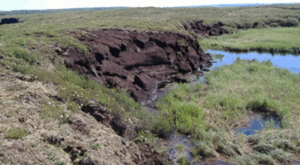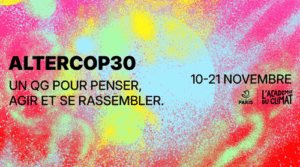Soutenance de thèse
Jonnathan Cespedes
LMD
Summertime Nocturnal Low-Level Jet in the Paris Region: Interactions with the Urban Heat and Surface Characteristics
Résumé
Urban areas, covering 1-3% of global land but hosting over half of the world’s population, play a crucial role in the interaction between human activities and the Atmospheric Boundary Layer (ABL). Cities modify the ABL through direct heat emissions, impervious materials, and increased surface roughness, leading to unique microclimates with lower wind speeds and increased turbulence. A prominent effect is the nocturnal Urban Heat Island (UHI), where cities remain warmer than their rural surroundings, intensifying heat-related health risks, particularly at night.
Despite the significance of these phenomena, the interactions between synoptic weather patterns and urban-induced atmospheric changes remain poorly understood, mainly due to a lack of detailed observations at urban sites. This thesis investigates the interaction between the nocturnal mesoscale Low-Level Jet (LLJ) and the urban environment in the Paris region. Over two years, wind and turbulence data were collected using Doppler Wind Lidar (DWL) at two sites: an urban location in central Paris and a suburban site 25 km southwest. An automatic algorithm was implemented to detect and characterize LLJ events, alongside a new shallow Doppler Beam Swinging (DBS) scan to monitor shallow LLJs within the blind zone of the urban DWL.
The study focused on the summer periods of 2022 and 2023, providing a detailed analysis of LLJ characteristics. Results showed that LLJs are frequent in the region, occurring on 70% of nights in 2022 and 40-48% in 2023, with differences driven by synoptic weather conditions. LLJ core heights ranged from 200 to 950 meters, with wind speeds between 3 and 18 m/s. The study also found a link between LLJ characteristics and UHI intensity, where weaker vertical mixing led to more pronounced UHI effects during extreme heat events. These findings highlight the critical role of ABL dynamics in understanding urban environmental risks, such as heat stress.
Informations supplémentaires
Lieu
SIRTA Observatory on the campus of École Polytechnique
Coordonnées géographiques
Observatoire SIRTA :
Lat. : 48.717607°N
Long. : 2.209002°E
Lien Googlemap ici : https://goo.gl/maps/WXvAijvZtjNe3us47
Sinon tapez « Observatoire SIRTA 2020 » dans Googlemap
Visio
https://cnrs.zoom.us/j/99727324980?pwd=NldqCfju8I9bFCjPdApZIaGwH2uxqt.1
After the defense and the jury’s discussion, there will be a « pot de thèse, » I would be happy if you could join me for the presentation and/or the pot de thèse afterward.
Composition du jury
- M. Martial HAEFFELIN – Directeur de thèse
- Mme Simone KOTTHAUS – Co-directrice de thèse
- Mme Natalie THEEUWES – Examinatrice
- Mme Elsa DIEUDONNE – Examinatrice
- M. Riwal PLOUGONVEN – Examinateur
- M. Ulrich LÖHNERT – Rapporteur
- M. Matthias MAUDER – Rapporteur
- M. Clément TOUPOINT – Superviseur partenaire industriel






